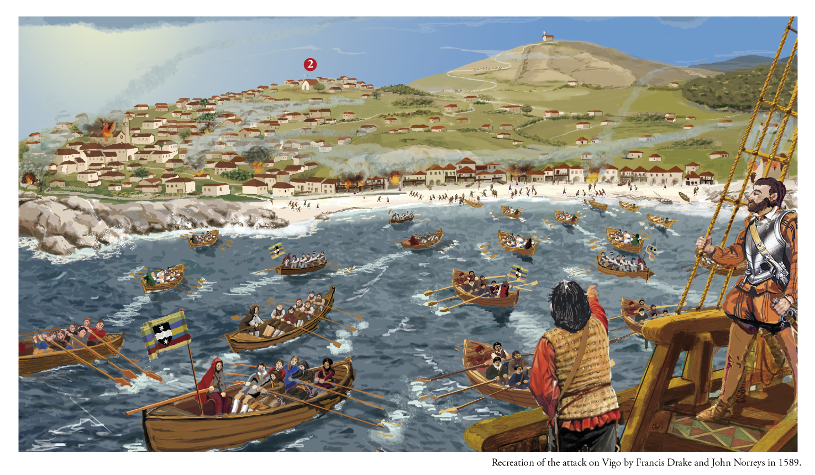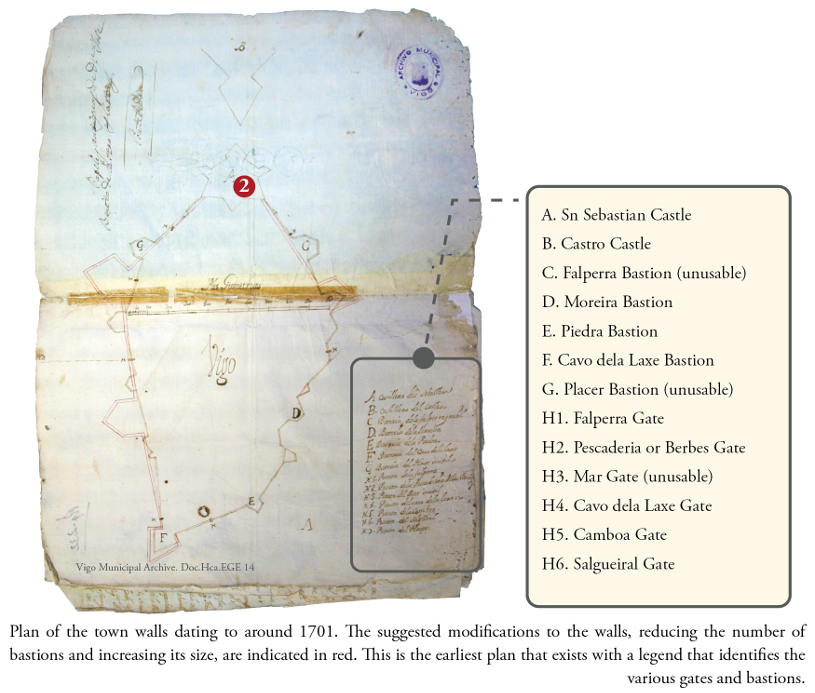Historical Heritage
Without any defences Vigo was an easy target for pirates and enemy forces
Vigo was a prosperous town during the 16th century due to the dynamic nature of its people and its port. However, without any town defences, it was vulnerable to enemy attacks from the sea. Defences were needed to protect the local people and its port. However, these took a century to be built.
Vigo was a flourishing port with increasing commercial traffic. But it was defenceless without any town walls. The English corsairs, supported by the crown, attacked Spanish ships and ports. In 1589 Vigo was attacked by Francis Drake, who destroyed houses, warehouses, ships and churches, ruining the livelihoods of the local inhabitants.

Attack by Francis Drake (1589)
"The Lutheran corsair Francis Drake, admiral of the English fleet, sent by the Lutheran Queen Elizabeth (…) entered the Vigo Estuary with 213 large and small vessels, having been to La Coruña, which they couldn’t capture except to burn and devastate the Pescaderia district, moving on then to Lisbon with twelve thousand soldiers to the walls of the city, and then after retreating and on the way back came to this town (Vigo) which they occupied from Bouzas to Rande, leaving on the Cíes Islands a rearguard of 20 ships, and they brought here six thousand soldiers, with the largest force disembarking on the Cabo de Teys and the rest in Santa Marta and Coia and they took and occupied Mount Castro and the hermitage of Our Lady of Castro and entered the town without any resistance and then sacked and burned the church and the best houses in the town, up to five hundred and seventy houses, but with only two women killed, and when they retreated from the town, up to three hundred Lutherans were killed in the Gandariña and surrounding areas"
Description by Gregorio Servido, Prior of Vigo, recorded in parish records (1589)

At the end of the 16th century, King Philip II set out a plan to protect the Galician ports. But it still took a long time to build the town walls. These were finally built in 1656, during the height of the Portuguese War of Independence. It was also a year after the Englishman, John Culpepper, had fired upon the town, destroying a number of houses.
Pirate attacks, war, emigration of many of the town’s inhabitants and a reduction in commercial activity had left the town seriously impoverished.
The defences were therefore built during difficult times for the local people. They were rapidly constructed on a complex topography with limited resources. The result was a weak town wall with few defences. The work began before the King had approved its budget, perhaps because the local people felt a pressing need. Although royal engineers had made earlier plans, the town walls were designed by a local man, Captain D. Andrés de Arce y Castro.
Concello de Vigo
Praza do Rei - 36202 - Vigo (Pontevedra) - Teléfono: 010 - 986810100


